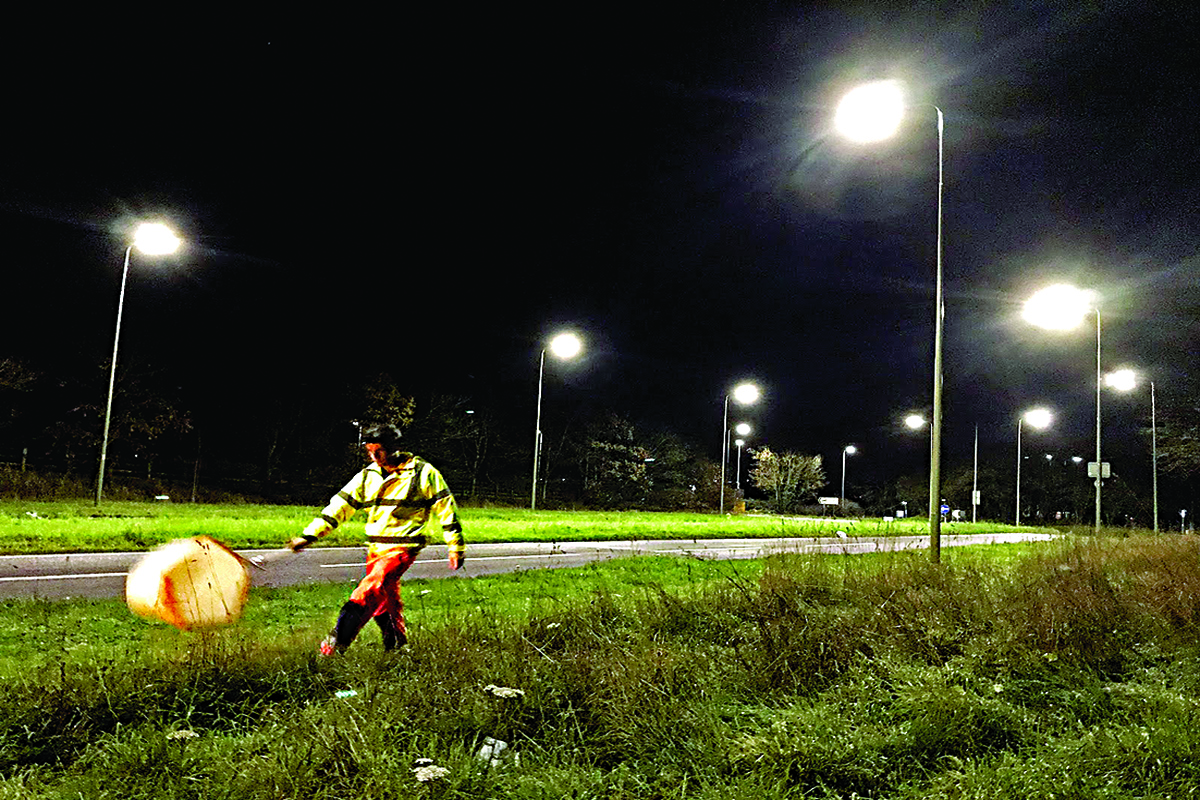High-lux illumination of urban centres after sundown has been linked with several reasons to tone it down. The purpose of lights at night, of course, is more hours of economic activity, but the cost is power consumption and health issues caused by disrupting the day-night cycle.
The other cost is to the environment. While humans have adapted in some ways, animal populations, generally, have not. A paper in the journal, Science Advances, goes into the effect that night-time illumination has on insect populations. Douglas H Boyes, Darren M Evans, Richard Fox, Mark S Parsons and Michael J O Pocock, from UK Centre for Ecology and Hydrology, at Wallingford, the Newcastle University, and Butterfly Conservation, a United Kingdom-wide body for butterflies and moths, describe how street lighting causes a form of environmental damage that could have far-reaching consequences.
The main components that keep the environment in order are the atmosphere, vegetation, ocean currents and climate. Underlying these wider components, however, are the roles of micro-organisms and the insects that ecosystems contain. Microbes, which account for more than half the mass of all living things, are the agents that make the nitrogen of the atmosphere available for the entire plant, and hence animal kingdoms. While microbes thus provide the bases, it is the insect population, of nearly a million different species, that enables the ecosystem to function — insects are vehicles of pollination, and they form the food for myriad other species that play their own roles in maintaining the ecosystem. Insects could be considered the currency of the ecological economy.
The paper starts with the mention of growing evidence that some land-based insect populations have declined over the last few decades. It causes concern about the future of ecosystems, the paper says. And one of the best studied groups, the paper says, are moths, which “are functionally important for terrestrial ecosystems, including as pollinators, prey for both vertebrates (like birds and bats) and invertebrates (like spiders and social wasps), and hosts for parasitoids (other insects that attack pests).” And hence, the paper adds, “these changes are expected to have substantial cascading consequences for ecosystems.”
Indeed, the consequences could be serious. The systems of the Earth are maintained by the balance between two main processes. On the one hand, of the pace of metabolism, or changing food to energy, in living things, or human-made processes, like combustion. And, on the other hand, the Earth’s green cover, using the Sun’s energy to undo results of the first process. With the first process having gone out of hand, the Earth is now facing a crisis. And a large part of the solution, it appears, lies in making use of microbes and natural processes, both to repair and provide energy for lifestyles. In this context, damage to the ecology of microbes and insects would precipitate a crisis from which there may be no recovery.
Having started with saying that insect populations are decreasing, the paper says it is being “increasingly recognised that artificial illumination that we use at night is a serious threat to biodiversity and ecosystem processes”. The diverse insect species that act in concert to maintain our ecosystem have evolved over geological eons. And through the long period of evolution, there has been negligible night-time illumination, beyond moonlight or starlight. The emergence of brightly lit cities and lighting of streets, even highways in rural areas, the paper says, has had wide-ranging negative effects on insect life, inhibiting both caterpillar feeding and adult activity, restricting reproduction and facilitating predation.
Despite strong grounds to believe that night-time illumination affects insect behaviour, however, there is limited empirical evidence to say that artificial lighting at night is a driver of the decline of insect populations, the paper says. The authors hence undertook a study, using a “matched pairs” experiment design — of comparing the effect that existing direct lighting had on the habitats of wild caterpillars, with carefully matched habitats which were unlit. This approach, of studies over large, naturally occurring insect populations, promised to be more reliable, apart from being cheaper and more versatile, than creating insect colonies for “manipulative” studies, the paper says.
Moths were the specific insects studied, and which were taken to represent insects, generally. And the focus was on the less mobile, caterpillar stage of the moth life-cycle. That was because studying the effect of illumination on the caterpillars would directly relate to the effect on adult moth populations, the paper explains.
The caterpillar populations were sampled in two kinds of habitat, hedgerows and grass margins. And in pairs, of areas that were illuminated with streetlights, and matching areas with identical or similar shrubbery, that were not illuminated. The sampling of hedgerows was done in mid-May 2019 (end of the moth-caterpillar feeding season) and mid-April 2020 (start of the feeding season). The sampling of grass margins was for another species of moth-caterpillars, during mild nights from November to April.
The results of the trials were that there was distinctly lower caterpillar abundance in the areas lit by halogen lamps — 41 per cent less in the hedgerows and 24 per cent less in the grass margins. The paper notes that there is a trend of halogen lamps, used for night-time illumination, being replaced by light-emitting diode lamps, as LEDs are energy efficient and considered to be “eco-friendly”. The study hence covered areas illuminated by LED lamps too.
The findings were that the areas lit by LEDs showed a 52 per cent drop in caterpillar abundance, while the areas lit by halogen lamps showed a drop of 43 per cent. Although LED lamps appear to attract less moths than halogen lamps, what is seen is that LED lighting is more disruptive for the moth population. It is a source of concern, the paper says, as the use of white light, LED lamps is rising. It is possible, however, to control the intensity and spectrum of LED lamps, the paper says, and this may help regulate their effects.
The study hence provides strong evidence that street lighting has the effect of reducing wild insect populations. One reason could be that fewer eggs are laid in illuminated areas, as the activity of moths is disrupted. And there are indirect effects, like opening opportunities for predators, or for other insects that “help” plants by eliminating caterpillars. There is also the effect of lighting enabling plants to more effectively resist being fed upon by caterpillars.
The study is an important step in understanding the importance of light pollution as a factor affecting insect abundance, compared to drivers like habitat loss and climate change. And also, to stress the importance of insects, as essential actors in pollination, as well as forming the start of the animal food chain.
Advertisement
Advertisement











